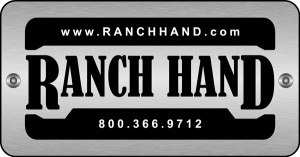
Ranch Hand Truckfitters has a motto for promoting our truck accessories: “Be on the Safe Side with Ranch Hand.” We say that because safety, strength and durability are built into all of our products for maximum benefit to our truck customers.
This fall, that motto, “Be on the Safe Side,” is also an appropriate warning to drivers on rural roads during the height of deer season — particularly during October through December when deer and other large wildlife collisions are most prevalent.
Consider these facts:
- The odds that drivers will hit a deer “doubles” during the Oct.-Dec. period.
- For the eighth year in a row, West Virginia tops the list of states where a collision is most likely, with odds of 1 in 39, nearly a 5% increase over 2013.
- Ten percent of the country’s deer collisions occur in Pennsylvania, 123,941.
- Periods of daily high-deer movement around dawn and dusk plus seasonal behavior patterns (such as the Oct.-Dec. breeding season) increase the risk for auto-deer collisions.
- In 2012, 175 deaths resulted from collisions with animals, with deer being the animal most often struck.
Consider these tips for drivers in deer country:
- Always wear your seatbelt.
At night, when there’s no oncoming traffic, use your high beams. - Avoid swerving when you see a deer. Of course, you could always lower your odds of hitting a deer by moving to Hawaii, where there’s just 1 chance in 10,281 of colliding with Bambi!However, if you’d rather stay put, then Ranch Hand advises you to be extra cautious and extra aware of what might be just ahead or just around that next turn on rural roads. It’s better to be on the safe side, instead of having to suddenly shout, “watch out!” — “Oh, Deer!!!”
Our thanks for the information supplied in this article go to Kevin Jones of Hard Working Trucks; the Insurance Information Institute and the Insurance Institute for Highway Safety; and Ron Regan, Executive Director for the Association of Fish & Wildlife Agencies.
By Mavis Arambula-Medellin
